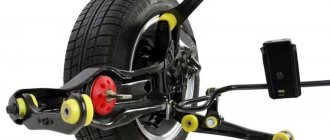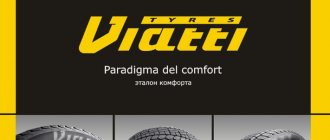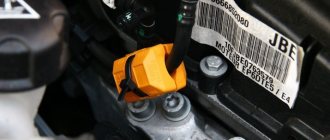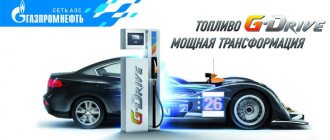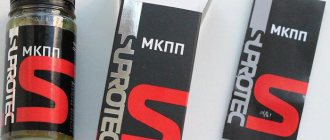Engine magazine continues to test the strength of automotive parts. This time we decided to check the steering tips for one of the most popular cars on the Russian market - Renault Logan . To do this, we purchased an original Renault and ten analogues of different price categories. Read on to find out what came of it.
So, the original Renault steering end with the original number 485202867R is used not only on the Logan and Sandero models, but also on the domestic analogue of the Romanian-French station wagon - Lada Largus. A good quality part is made in France and has a decent price: 1945 rubles.
Spare parts of the following brands were taken as analogues:
Test method
The test methodology is based on GOST R 52433-2005 “Automobile vehicles. Ball joints. Technical requirements and test methods”, which also applies to tie rods with ball joints (steering ends).
Tests related to the force of tearing and extrusion were carried out by applying a vertical load on a universal tensile-compression machine R20 in the laboratory of NPO Talis LLC; tests were also carried out there to test the anthers for frost resistance.
The minimum permissible values of the pullout force and the force of squeezing the pin out of the joint body are indicated in Appendix A to GOST, depending on the diameter of the ball pin. In this case, our steering tips have two pin sizes (22 and 25 mm), therefore, according to GOST, their minimum applied forces must differ. True, from a logical point of view, within the framework of applicability on the same car, this is not entirely true.
In the range of finger ball diameters from 21 to 24 mm, the minimum force for pulling out is 1500 kgf, for extrusion - 1900 kgf. For balls with a diameter of 24 to 27 mm - 2000 and 2500 kgf, respectively. The original ball joint did not come with a nut to attach it to the steering knuckle, so I had to use a heavy-duty Moog ball joint nut.
Having an original part in hand, we will consider its parameters as reference ones, since these are the characteristics that the manufacturer set for their car. In this case, we see that with a ball diameter of 22 mm, the pullout force is three times higher than the permissible values, which is the best result among all tested samples. But the extrusion force exactly corresponds to GOST, which is easily explained: the steering tip experiences minimal extrusion load in real driving conditions, in contrast to the breakout load when, for example, the car falls into a hole and the impact vector is directed from bottom to top.
The test results were mixed. Firstly, half of the manufacturers of non-original products make the ball diameter increased by 3 mm, which means that GOST standards for them will be increased. Secondly, for unknown reasons, some manufacturers, unlike the original Renault, showed the opposite endurance: with weak pullout rates, parts have a double pullout endurance, which is strange, since the steering tip almost does not experience such a load. One way or another, we decided to distribute the places according to the amount of points earned for tearing and extrusion, that is, according to the general parameter of the strength of the mechanism.
The leader in the measurements was the FAG steering end: the pull-out rate is two and a half times higher than GOST, the extrusion rate is twice as good. In second place is the Swag part, in third place is Lynx. Let us comment on the third place in more detail: the fact is that the Lynx tip showed a record breaking load of 5.3 tons, after which the thread of the part was cut off. However, taking into account the increased diameter of the ball, the load factor (2.65) of the spare part was still lower than that of the original, which withstood a threefold overload, while the thread remained intact.
The original Renault tip is formally in fourth place, but only because the extrusion parameter exactly corresponds to GOST - the automaker did not consider it necessary to make this characteristic more “hardy”.
With average performance, the Zekkert turned out to have rather weak metal - even with a double pullout load it cut off the thread.
Ashika and Fenox have average-to-consistent CTR scores, which is especially surprising for a respected CTR brand that regularly wins our tests. Well, the weakest are Torque, Moog and Flennor. The first one bent the metal under a not very heavy load, the second one did not pass the GOST standard for extrusion. The Flennor part, with a one-and-a-half-fold margin of strength for extrusion, also did not pass GOST standards for pull-out force, which means it is practically useless.
Brand tour
As practice shows, original steering tips can be head and shoulders above their analogues, or they may not differ significantly from them. The fact is that European automakers order steering parts from manufacturers who produce products under their own name. For example, if you have a Volvo , Audi , Volkswagen or BMW , then it has Lemforder steering ends. In fact, when you buy a branded spare part in a package with the name of this manufacturer, you are buying the same original, but at a much more affordable price. You should pay attention to the products of the following companies first of all:
- Lemforder (Germany) – as already mentioned, original quality at a low price;
- TRW (Germany) - the company is known for selling fairly high-quality spare parts at very affordable prices. They are inferior in quality to the originals;
- MOOG (USA) is a renowned manufacturer of suspension parts. Spare parts from the American manufacturer cost a lot, but they are head and shoulders above many other analogues. Beware of fakes!
- Mapco (Germany) is a manufacturer that has been undeservedly ignored by almost all car enthusiasts. In terms of price-quality ratio, its spare parts are among the best on the market. The steering parts perform well on Russian and Ukrainian roads;
- Nakamoto (Taiwan) - offers excellent tips for Asian-made cars. Today, the Thai company's products are exported to 50 countries, which is a good indicator;
- Febi (Germany) is a manufacturer that collects not the most flattering reviews. However, in general, the average quality of spare parts and consumables is compensated by incredibly low prices. If you are looking for a budget tip and boot, then you should pay attention to the products under the name Febi;
- CTR (South Korea) is another manufacturer offering inexpensive steering gear parts. At the same time, the quality of all parts is very high. The situation is overshadowed by the huge number of fakes that have flooded the secondary market for auto parts.
Spare parts for Audi 50
Spare parts for audi a6
Good tips are also offered by Delphi (USA), Wulf Gaertner Autoparts AG (Germany), GTR (Taiwan), SWAG (Germany). The latter company offers the most budget analogues, the quality of which clearly does not break records.
Freezing anthers
According to established custom, we are expanding the test methodology and testing pre-removed rubber boots of steering tips for frost resistance. The parts are kept at a temperature of –40 °C for 24 hours, followed by testing for loss of elasticity, since the tip is guaranteed to fail if sand, dirt and salt, which are sprinkled on winter roads, get inside the joint.
By the way, it is worth mentioning separately that only the original Renault part and the CTR boot have metal rings inside to ensure a tighter fit to the ball pin, for which both can be given a point. For FAG, the protective boot is made of transparent polyurethane. Most manufacturers have CR markings on their anthers, which indicates that these covers are made of chloroprene rubber.
To our surprise and to the honor of the manufacturers, all tested samples successfully withstood the temperature of –40 °C, so in most regions of our country the anthers will withstand weather conditions.
However, we decided to subject the parts to extreme stress and lowered the temperature to -50 ° C. Only four parts were able to withstand this figure - Renault, FAG, Lynx and Zekkert, to which we assign an additional point. The CTR held on until the last, opening up like a rose, but without losing a single piece of rubber. The remaining anthers scattered.
How to check the condition of the tie rod end
To carry out an inspection, you should drive your car onto an overpass or inspection hole. It is quite possible to get by using a jack if there is no access to the inspection hole. The sequence of actions is as follows:
- Use a rag to clean the parts from dirt;
- Inspect the mounting points;
- Carefully inspect the steering tip boot. A boot covered with cracks definitely needs to be replaced;
- Have an assistant turn the steering wheel and observe the operation of the tip. If it has moved along the length of the finger axis by a distance of more than 1.5 millimeters, then we can talk about the presence of play.
If the steering tip has play, it must be replaced as soon as possible. Anthers are consumables, so if there is the slightest damage, they can be safely replaced with new ones.
We also note that primary diagnostics can be carried out not only with the car raised, but also with the wheels removed or hung. This is true for checking ball joints, stabilizer bars and bearings. However, to get a complete picture, it is still worth carefully examining the underbody of the car and the steering elements in particular.
Chemical analysis of metal
The final part of the tests in accordance with GOST requirements is chemical analysis and determination of the steel grade for the ball pin. To do this, we transferred the previously torn fingers from the hinges to the accredited laboratory of the Volna Plant NPO, which has at its disposal a DFS-500 spectrometer to recognize the amount of each alloying or deteriorating element in the steel composition.
The obtained result showed that in almost all the studied ball joints of steering tips, structural alloy steels within 40X with a chromium content of about 1% and manganese within 0.7% are used. The Lynx and Zekkert tips (the only ones whose threads were cut off) did not show any deviations in the metal, as did the bent Torque. For the CTR ball end, the ball pin is made of 35ХМ steel - in addition to chromium and manganese, molybdenum is added to the alloy as an alloying additive, which increases strength and wear resistance.
Rating of the best steering wheel end companies
| Nomination | place | manufacturer | rating |
| Rating of the best steering wheel end companies | 1 | Lemforder | 5.0 |
| 2 | TRW | 4.9 | |
| 3 | MOOG | 4.8 | |
| 4 | DELPHI | 4.7 | |
| 5 | ZF PARTS | 4.6 | |
| 6 | QSTEN | 4.5 | |
| 7 | WEEN | 4.4 | |
| 8 | MASUMA | 4.3 | |
| 9 | FENOX | 4.2 | |
| 10 | HANS PRIES (TOPRAN) | 4.1 |
Lemforder
A packaging brand that produces tie rods and rods for conveyors of the most famous German automakers: BMW, Mercedes-Benz and Volkswagen. The main competitive advantage of the brand over others lies in the low price factor, since the refusal to produce independently has made the manufacturing company a qualified and renowned intermediary.
Over the past 4-5 years, in original Lemforder packages there have been spare parts made in South Korea from CTR, as well as German ones from Sachs, which manages to work both for itself and supply parts to another partner in the corporation - Knecht. And if many loyal Lemforder fans still cannot come to terms with the “packer” status, they have already found a compromise with the quality of new parts in the old box. This is because they have not lost at all the quality of the relatively former original: the average mileage of the steering tip before critical play appears, even on budget cars can reach 100-150 thousand kilometers, not to mention premium options. As they say, the brand “lost its face”, but still managed to maintain the brand.
Second place in the ranking of manufacturers is occupied by TRW, known in Russia under the Lucas brand. The production facilities of this giant from Germany (at least for the European segment) are partially located at home and in Spain, which allows us to pin hopes on the good technical conditions of the finished product with a minimum percentage of defects when leaving the assembly line.
As consumers note, the quality of finished tie rod ends (and steering rods of the control system) from TRW is often inferior to the quality of the original parts off the assembly line. This applies not only to European cars: even on Japanese and Korean flagships, the “native” tips sometimes look much more impressive and last over 100 thousand kilometers. But the products of the German corporation have one undeniable advantage over the originals: they, as a rule, cost the buyer several times less. And considering that the average mileage on a replaced part before the first signs of a malfunction appear can be 70-80 thousand kilometers, the benefit is more than obvious.
The third place in the rating goes to MOOG, a well-known American concern that produces spare parts for control systems and vehicle chassis. Until the early 2000s, this manufacturer existed detached from the markets of Europe and Asia - its priority became supporting domestic American auto production. A little later, the situation began to take on a different form: a need for fame appeared, as competitors began to fill the domestic market, including from other continents.
Partly due to its late entry into the world, partly due to the location of production facilities in the United States, MOOG continues to be positioned as a fairly expensive company. In this regard, standard prices for tie rod ends remain significantly higher than the market average. However, the advantages are compliance with strict quality standards and a low level of defects (counterfeits do not count). According to hundreds of consumers, the technical conditions of factory consumables allow them to travel up to 150 thousand kilometers without obvious signs of imminent breakdown, which, even taking into account the high price, often justifies the investment. And, oddly enough, MOOG can be called the manufacturer of the highest quality steering ends from the top three of the rating, even if the insufficiently high overall popularity coupled with the high price tag does not allow it to take first place.
DELPHI
In fourth place is another representative from the United States - the large corporation DELPHI with many subsidiaries and divisions in all parts of the globe. According to the reports of most experts (as well as according to professional users), this manufacturer belongs to the preferred category, whose products are distributed, including along the conveyor lines of many automakers.
The main problem with DELPHI tie rod ends is that their price often exceeds the price tags of original spare parts for certain types of cars. At the same time, there are no complaints about the quality: the boots and cuffs are always installed conscientiously, honestly fulfill the stated operating kilometers and are replaced from available components. As laboratory tests have shown, the average mileage (under normal operating conditions) can reach 150 thousand kilometers, which is an excellent result. But in the realities of Russian roads, this indicator should be divided in half, as well as the reporting indicators of all other competitors.
ZF PARTS
The fifth place of ZF PARTS is due to several aspects. Firstly, this brand belongs to the same corporation, which includes Lemforder, BOGE and Sachs. Secondly, its entire range of tie rod ends is the result of the work of the above-mentioned collaborating manufacturers (and packagers).
Based on the reasons described above, spare parts from ZF Parts have “uneven” quality, which leads to mixed user reviews and controversial opinions from experts. In particular, many confirm the fact that on mixed routes the service life of the tips can last only 20-25 thousand kilometers, while the actually declared 50-70. However, individual samples do show basic results. But their percentage ratio on the market is approximately 70:30, not in favor of the latter. The low price factor saves the day: by analogy with Lemforder, ZF PARTS keeps prices below the level of TRW and (even more so) MOOG, so that the product is consistently sold out at retail.
QSTEN
A premium analogue of spare parts from 555, which has earned the popularity of domestic users due to its performance in conditions of bad city roads and rough terrain. The average mileage in the "city - off-road" mode is 47-52 thousand kilometers, and all malfunctions are associated exclusively with the appearance of play in the hinge (a fracture along the cross-section of the rod does not occur, since all the tips have a massive structure).
A neutral indicator in relation to QSTEN can be considered the level of prices for goods: something is sold cheaper, and something is more expensive than the market. But the main drawback lies in the shortage of tips even in online stores. There are often cases when users can purchase a part for installation only on the left or right side of the car - the second one either has to wait a long time or look for in city warehouses. Moreover, the situation does not change at all over time. Due to such search difficulties, we award QSTEN sixth place in the rating, even despite the nominally good quality of the product.
The seventh line of the rating and Belgian quality, complemented by a correspondingly high price and good performance. WEEN is a premium and unpopular brand in Russia, producing steering ends for the European and Japanese segment of automakers. The average mileage, according to laboratory tests, can vary from 80 to 120 thousand kilometers, with a large degree of dependence on operating conditions. Naturally, it will be much easier to show the maximum on European autobahns than on domestic roads, so do not be surprised if the purchased part lasts no more than 60 thousand kilometers on your car.
The main aspect that does not allow WEEN to break out into the leading positions of the TOP of the best is the impossibility of direct competition with the more popular brands Lemforder, TRW or MOOG. Perhaps in the foreseeable future, the company will revise its pricing policy, which will increase the popularity of the product in Russia. In the meantime, we have very good workmanship with a price tag significantly higher than the market average. and, as a result, low brand popularity among consumers.
MASUMA
A Japanese manufacturer in the mid-price segment, which is gaining popularity and has become an alternative to the South Korean company CTR for domestic users. Masuma's main enterprise is located in China, from where spare parts (including steering ends) are supplied to the Russian market.
In general, it’s impossible to say anything negative about these details - cast metal, of course, is rough, but this has little effect on the quality. An exception may be some kind of air pore that has crept into the casting, which will provoke destruction of the rod in the cross section. Of the reviews, only one such case was identified, and all the rest were related to anther breakthrough or backlash. It is noteworthy that to increase reliability, the Chinese used a very effective method of installing 2 o-rings in the hinge. This design nuance has become the hallmark of a series of tips from Masuma, and has made it possible to extend their service life to an average of 50-60 thousand kilometers.
FENOX
The controversial, but very cheap and geographically close to Russia manufacturer Fenox breaks into the top ten of our rating. According to preliminary estimates based on user reviews, the brand showed itself to be significantly better than the “losing” CTR quality and the unpopular Sidem. What can we say: Belarusians understand a lot about fine-tuning the design of a part in order to increase reliability and service life. At the place where the boot is attached, together with an interference fit, an annular groove was provided, which prevents the boot itself from being torn off during operation. Typically, this element is present on almost all Fenox tips.
A small nuance of purchasing spare parts from this manufacturer is the need for preliminary maintenance before installation. Thus, every second user recommends replacing the factory lubricant, which tends to take a gel-like form at temperatures below +5 degrees Celsius. Together with it, the average mileage of the tip is 30 thousand kilometers, while the resource of serviced units tends to 50 thousand.
HANS PRIES (TOPRAN)
Hans Pires (formerly the Topran brand until recently) is a typical packager whose warehouse is located in Germany. It stands out from its competitors in two ways:
- it is relatively easy to get components under this brand even in Russia (another thing is that it is not very popular - it is not Lemforder);
- prices for spare parts are often lower than market prices.
Intermediary work with promoting your brand is, of course, a very profitable move. But at the same time, Hans Pires is often associated with great risks, which depend on the different quality (in this case) of the steering ends in the packaging. Trademark owners take advantage of the opportunity to buy spare parts from little-known Japanese, Korean, European and even Chinese enterprises. Naturally, against this background, incidents happen like 4-5 thousand kilometers before the tip fails. There are few such cases, but they still exist. But the price is affordable.
Attention! This rating is subjective in nature, is not an advertisement and does not serve as a purchase guide. Before purchasing, consultation with a specialist is required.
Car breakdown is a common and commonplace situation. It is not so easy to prevent it, even if you carefully monitor all components and assemblies and carry out preventive work on time.
Each car has its own weaknesses. In the case of the VAZ 2110, these include steering tips. If they are not replaced promptly in case of damage, you may face complete destruction of the entire steering mechanism. It’s hardly worth saying what financial losses you will incur.
How do they look
What's the result?
In terms of the total points earned, first place is unconditionally occupied by the FAG steering end from the German giant Schaeffler: not a single weak point in all the measurements taken.
In second position remains the Swag part from another German concern Bilstein Group - however, with the allowance for the fact that the boot may not withstand a very harsh winter.
On the third step with an equal number of points are the original Renault and the tip from Lynx. The native French part has a record for breakout parameters, a competent protective design and resistance to any frost, although it has the highest price. The Lynx part also has excellent pull-out strength and frost resistance.
In general, the total indicators of two more brands - Zekkert and CTR - are also quite good. The latter received an extra point for the protective design of the boot. Flennor and Moog parts did not meet GOST standards and could not withstand severe frosts. The rest performed to varying degrees below average.
The magazine "Engine" expresses gratitude to the laboratory of NPO "Talis" for their assistance in preparing and conducting the test.
Which steering tip boot should you prefer?
A separate question: how to choose a tip boot? If you clarify the compatibility of the boot with your car, which, again, is easiest using the capabilities of the World Wide Web, then all that remains is to choose the material of the product and give preference to a specific manufacturer. You should know the following about materials:
- Rubber is a cheap and wear-resistant material. Today, almost all manufacturers have learned to work with it. You can take an inexpensive domestic boot and travel about 40 thousand kilometers with it (sometimes it goes even more). Rubber tends to harden in the cold and does not perform well in northern latitudes - it begins to crack, which negatively affects the operation of the tie rod end;
- Polyurethane is tougher and more durable than rubber. Not all cars are supplied with polyurethane bushings and boots. If you have a relatively new foreign car, then several European companies are definitely involved in the production of polyurethane boot tips and CV joints.
When choosing anthers, you should refer to the electronic catalog or use the search by codes or VIN code of the car. It is necessary to take into account the internal and external diameters (denoted in catalogs as d and D), length (L). If the new boot completely replicates the old one, its code should be saved. Next, you will need to select analogues and decide on the brand. Give preference to anthers from:
The steering tip boot can be found in the catalogs of almost all steering system component manufacturers, but there is one catch: the boot is rarely sold separately - only in a set with the tip. The hardest thing to find separately are Lemforder anthers, and the easiest ones are Febi and Mobis.




